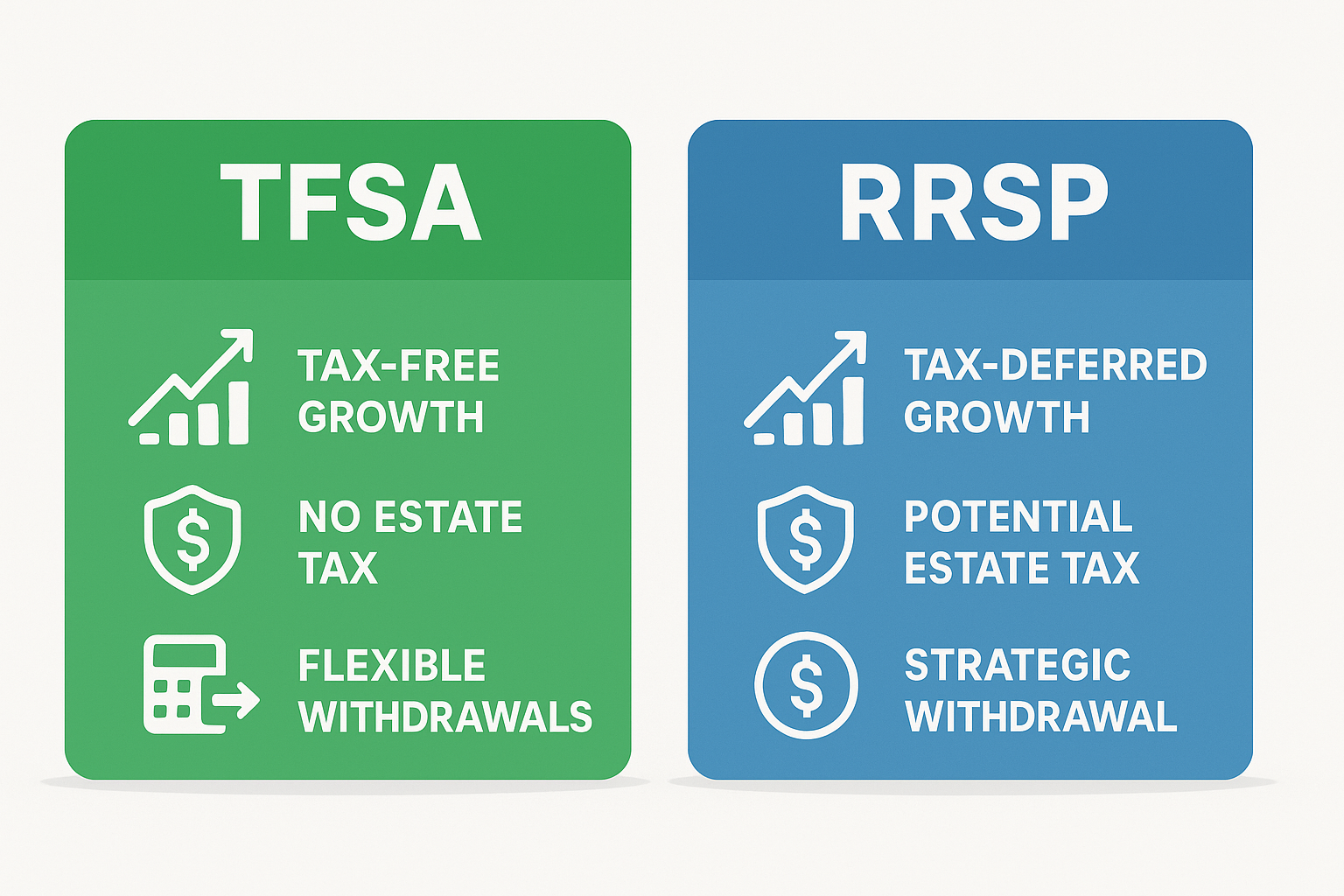Should You Max Out Your TFSA Every Year? A Full Case Study
“Always max out your TFSA” is advice nearly every Canadian has heard. With tax-free growth, no impact on OAS clawback, and no estate tax, it feels like an obvious and universally correct strategy.
But real financial planning is rarely one‑size‑fits‑all. When we tested this rule using Optiml’s planning engine, we found that depending on your income, savings, retirement timing, and withdrawal needs, maxing out the TFSA every year can either be a smart move or an unexpectedly costly one.
This week’s case study examines a real-world scenario: a couple in their early 50s planning to retire in 10 years, with moderate RRSP balances and a need to eventually draw down their TFSA savings. We compared their traditional “max TFSA” strategy against an Optiml‑generated optimized plan, and the results challenge conventional wisdom.
The Scenario
Here’s the profile used in this analysis:
- Couple in their early 50s
- Target retirement: 10 years from now
- RRSP Assets at retirement: approx. $600,000 combined (individual + spousal RRSPs)
- TFSA Assets: moderate balances, enough that they will eventually need to withdraw from them later in retirement
- Goal: Maximize long-term after-tax estate value while maintaining desired retirement income
This couple’s profile is extremely common, not high-net-worth, not low-income, and with a mix of registered and non-registered savings. For this type of household, the right contribution and withdrawal sequence can have a major impact on taxes and long-term outcomes.
The Two Strategies We Tested
Using Optiml’s Compare Plans feature, we built two side-by-side retirement plans:
- Plan A — Max TFSA Until Drawdown: A custom plan forcing maximum TFSA contributions every year until the TFSA is eventually needed for retirement spending.
- Plan B — Max Value Plan: An Optiml‑optimized plan prioritizing lifetime tax efficiency and long-term estate value. This strategy automatically stops TFSA contributions after 2040 when they no longer improve the outcome.
Here’s how they performed:
| Metric | Plan A: Max TFSA Until Drawdown | Plan B: Max Value Strategy |
|---|---|---|
| After-Tax Estate | $1,731,098 | $1,870,012 ✅ |
| Lifetime Taxes Paid | $1,218,275 ✅ | $1,482,693 |
| Estate Taxes | $0 ✅ | $129,044 |
| Average Tax Rate | 19.8% ✅ | 21.3% |
| End TFSA Balance | $1,725,104 ✅ | $1,623,039 |
| End RRSP Balance | $0 | $364,801 ✅ |
| TFSA Contributions (Lifetime) | $487,000 ✅ | $248,656 |
| RRSP Withdrawals (Lifetime) | $1,066,492 | $2,000,855 ✅ |
Why the “Max TFSA Every Year” Strategy Underperformed
In this couple’s case, maxing out the TFSA required pulling money from the RRSP earlier and more aggressively than needed. Those early RRSP withdrawals reduced tax-deferred growth and forced the RRSP to be fully depleted by the end of retirement.
Since the couple eventually needed to withdraw from their TFSAs later in life, draining the RRSP earlier led to less total compounding across the full portfolio.
The Optiml‑generated plan, however:
- Stopped TFSA contributions when they no longer improved the final outcome
- Allowed the RRSP to continue compounding for longer
- Delayed TFSA withdrawals further into retirement
- Generated a higher after-tax estate despite higher lifetime taxes
This case highlights a counterintuitive truth: lower taxes do not always mean better financial outcomes. The sequencing of contributions and withdrawals, and how they interact matters more.
But in Other Cases, Maxing Out the TFSA *Is* the Best Strategy
This example is just one scenario. If the couple had a very different financial profile, the results could flip.
For instance, if someone has:
- Much higher RRSP balances (e.g., $1M+)
- Significant non-registered investments
- A long retirement with no need to draw on their TFSA
- Higher taxable income during retirement
…then maxing out the TFSA every year can absolutely be the optimal approach.
In those situations, TFSAs often become an inheritance vehicle, money that will never be touched during the retiree's lifetime. In that case, maximizing TFSA contributions provides:
- Permanent tax-free growth
- Higher estate value
- No tax on death
- Flexibility to withdraw if needed
This is why every case must be analyzed individually. There is no universal rule that works for all families.
How We Built the Test in Optiml
To build this comparison, we used:
- The Max Value Plan as the optimized baseline
- A Custom Plan forcing annual maximum TFSA contributions
- The Compare Plans tool to view long-term outcomes across both strategies
This analysis would be nearly impossible in spreadsheets or traditional retirement tools. Optiml makes it possible to test real strategies, compare lifetime tax impacts, and measure true after-tax outcomes.
The Takeaway: Your Plan Is Unique
Maxing out your TFSA is usually a good decision, but not always the best one. As shown in this case study, even a well-intentioned contribution strategy can reduce long-term outcomes if it forces early withdrawals from other accounts.
But in other situations, especially for higher-net-worth households, maxing the TFSA every year can be the clear winner.
Your plan depends on your accounts, your income, your timing, your goals, and how long your assets need to last.
With Optiml’s Custom Plan and Compare Plans features, you can model real strategies, not guess. You can finally see the difference in taxes, withdrawals, and estate value, with full clarity.
If you'd like help setting this up in your account, just ask EVA inside the platform or book a demo with our team. We're always happy to walk you through your options.



